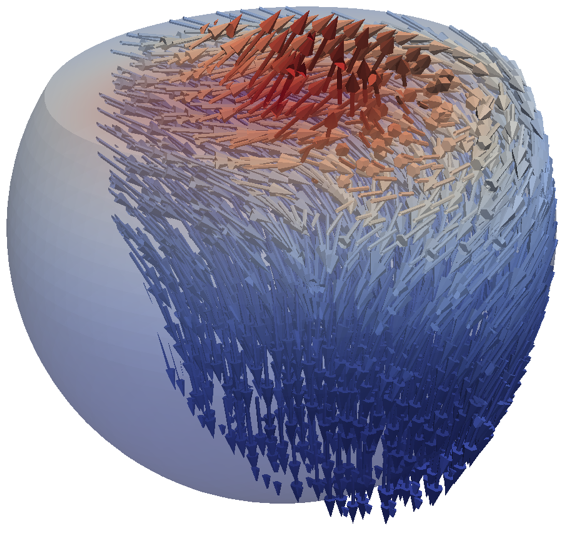On Friday, 18 October 2025 we hosted approximately 500 high school students at
Study Discusses New Finding About Magnetic Monopoles in Nano-Materials
Fri, 09/07/2018 - 8:42amA team from ETH Zurich and University College Dublin (Dr. Hans-Benjamin Braun), led by Dr. Michalis Charilaou who joined UL Lafayette this fall as an Assistant Professor of Physics, discovered that in metallic ferromagnetic nanoparticles and nanostructures, magnetization switching is closely associated with the creation of magnetic monopoles that bolt with unprecedented speeds through the material and produce emergent electric fields.
Specifically, the team found that when the dimensions of magnetic structures become comparable to fundamental magnetic length scales, i.e., the domain-wall width, topological constraints play a crucial role in the magnetization process and that a complete magnetization reversal can only occur when these topological constraints are violated. This happens by a snapping of skyrmion lines in the form of coaxial domain walls, which break and form pairs of hedgehogs, or monopoles (see Figure). These monopoles zip through the material with unprecedented speeds, higher than any other known magnetic object, and unwind the magnetic texture. These rapidly moving hedgehogs exert strong forces on the conduction electrons in a form of a solenoidal emergent electric field, in analogy to the magnetic field produced by moving electric charges.

Figure. Cross-section of the magnetization texture in an emergent magnetic monopole.
These findings showed for the first time how to generate and control topological point defects, monopoles, and they suggest that any ferromagnetic particle can essentially be a type of particle accelerator that produces measurable radiation. This opens up possibilities for deeper studies of the physics of dynamic magnetic phenomena and that will enable a technology that exploits emergent electromagnetic fields.
Dr. Charilaou will give a research seminar discussing this discovery on Wednesday, September 26, 3 pm, in Broussard Hall room 214.

